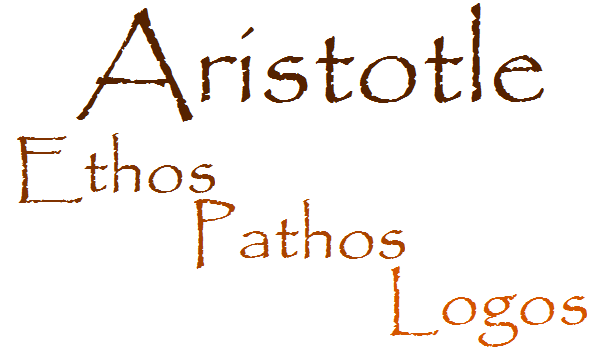We think of persuasion as a very complex quality that
only a few select individuals can achieve. In fact, persuasion is used by most
people in their everyday lives. Although they do not necessarily notice it,
they are using pathos, logos, and ethos to convince another individual. These
are the three big modes of rhetoric first introduced by Aristotle. I found it
very interesting to observe that logic is not the main path to persuade or win
an argument, since people can defend themselves if they really dominate the topic.
On the other hand, imposing a dominant image of you (ethos) and presenting
yourself with a strong character sets an image that is crucial for arguing.
Also, using pathos, or appealing to the emotions of the other part can allow
you to make valuable connections that make the other reflect upon the point and
eventually change his mind. Heinrichs uses one example throughout most of the
chapter which at first seems to be a simple discussion about a simple issue.
But that is only what is happening superficially. The way in which the author
is able to break up the argument into the different modes of rhetoric amazed
me. Even a young child can begin to use advanced persuasive techniques to
convince his parents of a certain desire.
Getting angry is the worst thing one can do in an argument. It is commonly
thought that an angry person will dominate the conversation. This might be true
in terms of voice loudness and rudeness, but not in the case of persuading.
Keeping calm and making your opponent sympathize with you will give you a huge
advantage in your argument. Heinrichs depicts a crucial idea when he declares, “Cicero
hinted that the great orator transforms himself into an emotional role model,
showing the audience how it should feel” (p. 43). One of the most important
aspects of arguing is achieving the audience’s sympathy towards you and your
idea. If the audience, in some cases only your opponent feels related or begins
to acknowledge the idea, then there has been an effective use of pathos. Sometimes,
conceding a few points to the counterpart is useful to make them feel
comfortable and think that they are doing a good job in getting their point
across, which they really are not. I was surprised to realize that the best
arguments won are those that do not feel like intense arguments, which can
start even with friends. Once the idea of an argument is induced in the
opponent’s mind, he will lift up his guard and begin to attack you. Instead of
attacking back, one should try to make the other individual accept your idea
and not only acknowledge that it is a good one, but be so into it that he has a
desire to implement it. This seems like a win-win situation but it is actually
a complete win for the rhetorician.

No hay comentarios:
Publicar un comentario